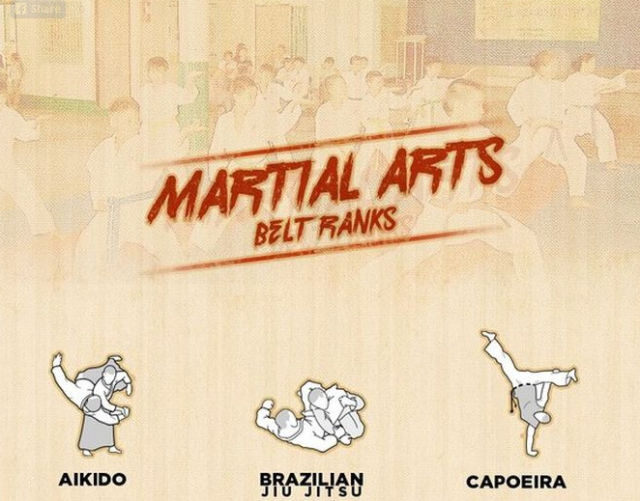The Background And Philosophy Of Martial Arts: A Deep Dive
The Background And Philosophy Of Martial Arts: A Deep Dive
Blog Article
Short Article Written By-Rafferty Mcintyre
Step into the ancient globe where martial arts were substantiated of necessity in diverse regions. Societies crafted special battling styles linked with historic contexts. Methods developed over centuries with committed practice and social exchanges. Today, contemporary martial arts blend traditional elements for optimal performance. Philosophically, martial arts stress discipline, self-improvement, and consistency. Regard, humbleness, and balance are fundamental concepts assisting professionals towards growth and strength. Explore the midsts of this rich history and viewpoint to discover the extensive influences shaping this enduring discipline.
Origins of Martial Arts
Fighting style came from different areas all over the world, progressing as useful battle systems to resist threats. These old combating styles were developed out of necessity, with each culture crafting methods suited to their distinct environments and difficulties. From the grappling arts of Jujutsu in Japan to the striking strategies of Martial art in China, martial arts were deeply linked with the historical, social, and social fabric of their particular societies.
In Japan, the samurai class refined martial arts like Kenjutsu, the art of the sword, which later evolved into the much more promoted kind of Kendo. At the same time, in Brazil, Capoeira became a blend of dance and combat, produced by enslaved Africans as a way to withstand injustice. Each martial art brings with it a rich background and philosophy, showing the values and beliefs of the people that practiced them.
As bruce lee martial arts explore the origins of martial arts, you uncover a tapestry of human ingenuity, strength, and the unrelenting spirit of warriors throughout time.
Development of Strategies
Via centuries of method and refinement, battle techniques within numerous martial arts have gone through an extensive advancement. From ancient designs like Martial art and Karate to more contemporary disciplines such as Brazilian Jiu-Jitsu and Krav Maga, the development of methods has been driven by a mix of social influences, sensible applications, and technical improvements.
https://effectsofmartialartsonkid10976.tokka-blog.com/26725293/boost-your-capabilities-advantages-of-signing-up-with-a-martial-arts-institution of this evolution is the cross-pollination of strategies in between different martial arts. For example, methods from conventional Japanese Jiu-Jitsu were incorporated into the production of Judo by Jigoro Kano in the late 19th century. This blending of designs has brought about the growth of hybrid martial arts like Mixed Martial Arts (MIXED MARTIAL ARTS), which integrate elements of striking, grappling, and submission techniques.
Furthermore, the advancement of strategies has been formed by the boosting emphasis on performance and effectiveness in combat. Professionals have constantly looked for to refine their techniques with extensive training, testing, and competition, bring about the advancement of highly specialized and effective battling styles. On the whole, the evolution of techniques in martial arts mirrors the dynamic nature of battle and the continuous quest for enhancement and advancement.
Philosophical Foundations
Exploring the underlying philosophical principles of martial arts offers insight right into their core worths and leading ideas. At the heart of several martial arts techniques is the principle of self-control itself. By training your mind and body to work as one natural system, you cultivate technique that extends past the dojo or gym into daily life. This discipline incorporates regard, humility, and self-discipline, shaping not just your physical capacities but also your personality.
Another fundamental thoughtful foundation in martial arts is the idea of continuous self-improvement. The trip of mastering a martial art is never-ending, with practitioners frequently making every effort to far better themselves, both physically and mentally. This focus on development promotes resilience, determination, and a development way of thinking that can be put on all elements of life.
Furthermore, martial arts emphasize the significance of consistency and equilibrium. Techniques are created to make use of a challenger's power versus them, highlighting the concept of generating and redirecting pressure rather than satisfying it head-on. This viewpoint includes interpersonal connections, advertising peaceful resolutions and good understanding. By welcoming these thoughtful foundations, martial artists not only improve their combat abilities but likewise cultivate a way of living fixated personal development, respect, and consistency.
Final thought
Finally, the history and approach of martial arts provide an abundant tapestry of custom, discipline, and self-improvement.
Take for example the tale of Bruce Lee, who transformed martial arts by blending different designs and ideologies to develop his own distinct type of Jeet Kune Do.
With devotion and technology, martial artists continue to press boundaries and inspire others to reach their complete potential both in fight and in life.
